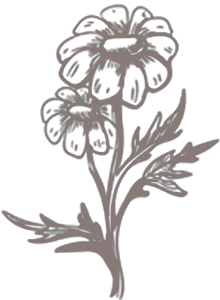Winter Blues Or Something More?

The cold, the darker days and the lack of vitamin D can mess with your mental and emotional health.
While some of us welcome the wintry weather, the change in seasons can trigger a common mental health condition known as seasonal affective disorder or SAD.
Experiencing a bit of the “winter blues” is normal, but in some cases, the changes in mood, energy, sleep patterns and appetite can be signs of something more serious. Feeling depressed, fatigued and disinterested in day-to-day activities can last from fall through winter and make the season especially long and miserable.
Other very common SAD symptoms include having trouble concentrating, sleeping too much, wanting to stay in bed all day long and eating too much, especially carbohydrates.
SAD is rarely diagnosed formally but if you have it, you know its debilitating effects on daily life. The Canadian Mental Health Association estimates more than one million Canadians experience winter depression.
We can’t bring out the sun’s healing rays but taking a proactive, natural approach can lessen winter’s wear and tear on our health, and prevent symptoms from getting worse over time. Don’t brush it off as simply a seasonal funk that you have to tough out annually.
Check-in with yourself often and take note of mood and energy changes. Recognizing your own specific depression symptoms can help you figure out when you need to get professional help.
Making self-care and self-compassion a priority can help manage this seasonal shift. This is one area that tends to slip when we’re feeling down but getting in the basics has a huge impact on your mood.
Stick to activities that are proven to genuinely make us feel good, although keep in mind that low energy is one of the most common SAD symptoms. Meditation, exercising, socializing and eating a healthy diet are proven mood boosters. As little as 10 minutes of exercise a day releases endorphins that can make a difference. Cut back on alcohol, caffeine and sugar, and introduce more nutrient-dense foods to fuel the body and mind.
Seek natural light every day – even the tiniest amount of sunlight that occurs in the cold months can help boost serotonin levels and moods too. Bundle up, apply sunscreen to your face, and head out for a short walk.
Bright light therapy is a highly-regarded treatment option that works by suppressing your brain’s melatonin production. Ideally, choose a medical-grade light box that emits 10,000 lux and use daily for 30 minutes before 8 a.m.
Some research suggests relief from SAD symptoms may be found from vitamin D supplementation. This may be worth exploring with a doctor or naturopath. Vitamin D deficiency is linked to the development of depression. Vitamin D is produced by the body from sunlight and eating particular foods like fish liver oils, wild salmon and dairy products.
Lessen screen time at night to boost sleep quality and life satisfaction. Avoid being on screens an hour before bed. Try reading or listening to music. Go to bed and wake up at the same time every day.
Take a trip if you can. Even a few days away to a sunny, warm place in January or February can interrupt the worst stretch of winter and lift spirits and souls.
Medication and cognitive behavioural therapy can lessen severe SAD. Consider seeing a mental health professional if you’re experiencing significant depression.














